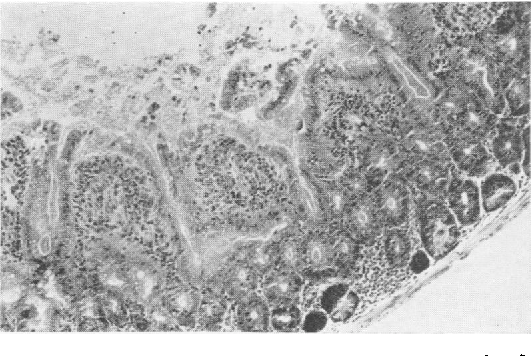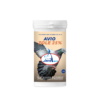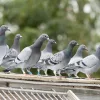
Hexamitiasis in Racing Pigeons Causes and Solutions
Hexamitiasis in Racing Pigeons: Causes and Solutions
In the world of pigeon racing, maintaining your birds in peak health is essential—not just for competition success, but for the overall wellbeing of your loft. Among the less-discussed yet highly damaging diseases affecting racing pigeons is hexamitiasis, a parasitic infection that often flies under the radar until it’s already causing serious harm.
This blog dives deep into what hexamitiasis is, how it spreads, how to recognize it early, and most importantly, how to treat and prevent it effectively. Whether you’re a seasoned fancier or new to the sport, understanding this disease is key to maintaining a high-performing race team and avoiding devastating loft losses.
What is Hexamitiasis?
Hexamitiasis is an intestinal disease caused by a protozoan parasite called Hexamita columbae, closely related to Trichomonas but with distinct behavior and symptoms. This parasite primarily targets the small intestine, interfering with digestion and nutrient absorption. Unlike many pigeon illnesses that affect the respiratory system, hexamitiasis wreaks havoc on the digestive tract—often leading to rapid weight loss, dehydration, and high mortality if left untreated.
While adult birds can be carriers, young racing pigeons (especially post-weaning) are the most vulnerable due to their immature immune systems.
How Do Pigeons Get Hexamitiasis?
Hexamitiasis spreads orally via contaminated droppings, water, and feed. The parasite thrives in wet, dirty loft conditions and can quickly spread when hygiene is poor or when birds are under stress.
Common Transmission Factors:
-
Contaminated waterers or feeders
-
Poor loft sanitation
-
Overcrowded conditions
-
Mixing unvaccinated or new birds without quarantine
-
Weaning and transport stress
The Hexamita organism multiplies rapidly in the intestine, especially under stress or concurrent infections (e.g., coccidiosis), making early detection and environmental control essential.
Symptoms of Hexamitiasis in Racing Pigeons
One of the challenges in managing hexamitiasis is its subtle onset. Symptoms may resemble other intestinal illnesses, especially trichomoniasis or E. coli infections.
Key Signs to Watch:
-
Watery, greenish-yellow droppings
-
Weight loss despite normal feeding
-
Ruffled feathers and general weakness
-
Dehydration and lethargy
-
Pigeons sitting fluffed up for long periods
-
Poor growth in young birds
-
Decreased race performance in affected adults
If multiple birds show digestive signs, don’t ignore it—it could be hexamitiasis or a mixed intestinal infection.
Diagnosing Hexamitiasis
Accurate diagnosis is crucial before beginning treatment. A trained avian veterinarian can confirm hexamitiasis through a microscopic fecal examination or crop swab.
Diagnostic Steps Include:
-
Direct fecal smear to visualize motile Hexamita organisms
-
Crop flush or intestinal samples for advanced analysis
-
Exclusion of other protozoan diseases like trichomoniasis or coccidiosis
Tip: Always request lab confirmation when possible. Misdiagnosis can lead to incorrect treatments that worsen the condition or cause resistance.
How to Treat Hexamitiasis in Racing Pigeons
Once diagnosed, prompt and targeted treatment is essential to stop the spread and help your birds recover.
Common Treatments:
-
Ronidazole Often effective against both Hexamita and Trichomonas
-
Dimetridazole Used in some countries but restricted in others due to toxicity
-
Metronidazole (Flagyl) Human-grade drug, sometimes prescribed off-label
-
Combination therapies When other intestinal protozoa are also present
Always follow veterinary dosage guidelines and avoid overuse of nitroimidazoles, which can harm the liver if used incorrectly.
Supportive Care Includes:
-
Probiotics after treatment to restore gut flora
-
Electrolytes and vitamins to aid hydration and recovery
-
Hygiene overhaul in feeders, waterers, and perches
💡 Important: Treat all loftmates, even asymptomatic ones, and disinfect the environment thoroughly to prevent reinfection.
Preventing Hexamitiasis in Your Racing Loft
As with most parasitic diseases, prevention is far easier and more sustainable than treatment. A combination of loft hygiene, biosecurity, and immune support creates a hostile environment for Hexamita and protects your pigeons from intestinal infections.
1. Maintain Loft Cleanliness
-
Clean droppings daily
-
Disinfect drinkers and feeders at least twice a week
-
Avoid wet spots and ensure proper drainage
-
Remove leftover feed at the end of each day
2. Use Clean Drinking Water
Contaminated water is a leading source of protozoan spread. Use clean, fresh water daily, and consider adding natural supplements like:
-
Apple cider vinegar (ACV) – Lowers pH to make the gut less hospitable
-
Oregano oil or garlic extracts – Natural antimicrobials that support gut health
3. Implement Strict Quarantine Procedures
Never mix untested or untreated birds directly into your loft. Quarantine for at least 21 days, monitor droppings, and provide preventive treatments if needed.
4. Boost Immunity Through Nutrition
A strong immune system fights off pathogens before they take hold.
Essential nutrients include:
-
Vitamin A – Maintains mucosal integrity
-
Vitamin E and selenium – Immune and antioxidant support
-
Zinc – Helps repair gut lining
-
Prebiotics and probiotics – Build healthy gut flora
Feeding a balanced grain mix with added grit and minerals helps maintain optimal gut health and digestion.
5. Avoid Overcrowding
Give your pigeons space to prevent stress and droppings contamination. Crowding increases the risk of disease spread, especially during hot, humid weather.
Hexamitiasis vs Trichomoniasis: What’s the Difference?
Many fanciers confuse hexamitiasis with trichomoniasis, but there are important differences.
| Feature | Hexamitiasis | Trichomoniasis |
|---|---|---|
| Affected Area | Intestines | Crop, throat, liver |
| Main Symptom | Watery green droppings | Yellow cheesy lesions |
| Spread | Fecal-oral contamination | Mouth-to-mouth, shared water |
| Target Group | Young birds post-weaning | Birds of all ages |
| Diagnosis | Fecal smear | Crop swab |
Some treatments (like ronidazole) are effective for both, which is why diagnosis is so critical before medicating.
Hexamitiasis and Racing Performance
Even mild intestinal infections can derail your racing team’s performance. Birds battling hexamitiasis suffer from:
-
Poor nutrient absorption
-
Dehydration
-
Lack of energy and stamina
-
Increased vulnerability to secondary infections
In many cases, fanciers only discover a problem after noticing slow times or refusal to train. Regular health checks, attention to droppings, and proactive gut care can help catch issues before they cost you a race.
Final Thoughts: Don’t Let Hexamitiasis Ground Your Birds
Hexamitiasis in racing pigeons is a serious but preventable problem. While it may not grab headlines like paramyxovirus or salmonella, its effects on growth, health, and performance can be just as damaging—especially in young birds.
By focusing on:
-
Daily loft hygiene
-
Clean water and feeders
-
Early detection and treatment
-
Proper nutrition and probiotics
-
Smart quarantine and biosecurity practices
You can keep your pigeons flying strong and your loft free from hexamitiasis.


